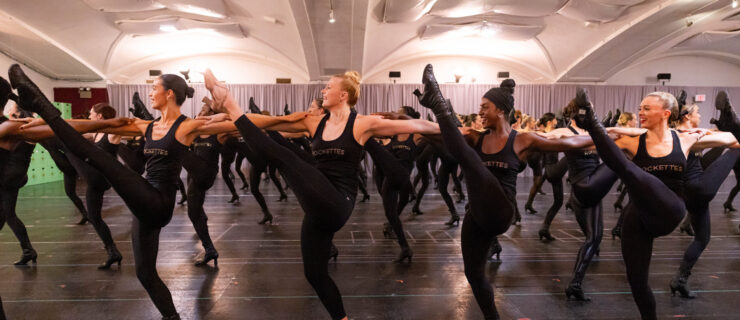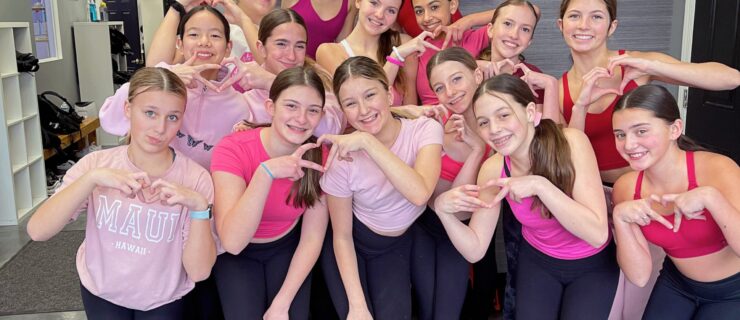How to Kick Your Mirror-Gazing Habit (Because There's No Better Time to Do It)
Editor’s note: This article was originally published in
Dance Spirit‘s Spring 2020 print issue, before the COVID-19 pandemic shut down the dance world. But we hope you’ll still find its advice useful—especially since many of us are being forced to dance in our homes, without large mirrors, right now.
It’s not hard to spot dancers who are too attached to the mirror. Onstage, they have vacant, unfocused eyes. In convention ballrooms, they lose confidence when they have to learn phrases fast, without the mirror’s help. In auditions, they keep anxiously checking out how they look instead of immersing themselves in the choreography.
The mirror is a dance studio staple for a reason: It helps dancers master alignment, pick up nuances in the movement, and clean group routines. But the mirror won’t always be there—and even when it is, you shouldn’t always need it. We went to the experts for tips on how to use the mirror as a tool, not a crutch.
Take It Away
The simplest way to learn to dance without a mirror? Practice! Jessie Riley, founder of WESTSIDE Dance Project in Long Beach, CA, challenges her students by having them try facing different directions in rehearsals, rather than dancing to the mirror all the time. “It’s important to be able to quickly adapt to different circumstances without getting disoriented or losing performance quality,” Riley explains. (If switching up what’s “front” isn’t an option, try pulling a curtain over the mirror.)
Practicing in class makes a difference, too. If you usually take class with a clear view of your reflection, Rose Taylor, children’s division coordinator and faculty member at Central Pennsylvania Youth Ballet, suggests moving to a spot in the studio with a more obstructed view. The less you use the mirror, the less you’ll mind when it’s gone.

Mackenzie Auger performing at 24 Seven (Break The Floor Productions, courtesy Auger)
Fix Your Focus
Being stuck in the mirror can have aesthetic consequences. For starters, if you’re constantly twisting your neck around to look at yourself, your lines will suffer. “Even if you’re just peeking with your eyes,” points out Mackenzie Auger, a high school senior who currently trains at WESTSIDE Dance Project, “it can make the movement look incomplete.”
Aiming your energy at the mirror can also make your dancing seem small and flat, says choreographer Marty Kudelka, who’s on faculty at Millennium Dance Complex and a fixture on the convention circuit. “The mirror’s so close,” he says, “whereas onstage, whether you’re in a theater or a giant stadium, you have to reach the people all the way in the back.”
One trick that can help refine your focus is to go back to basics. Taylor suggests practicing simple port de bras, being sure to fully engage your eyes and head. “Taking away technical complexity can help you retrain your brain not to constantly glance at the mirror,” she says. It might also be helpful for you to “choreograph” the desired focus for each position or transition, until including the eyes and head becomes second nature.

CPYB students taking class onstage (Rosalie O’Connor, courtesy CPYB)
Feel Things First
Over-reliance on the mirror can mean you’re more concerned with how movement looks than with how it feels. For Auger, sensation is everything. “I’m always thinking about which muscles I’m engaging,” she says. “When I’m warming up, I also like to think about body parts I might not normally pay attention to, like my fingers. Then, when I’m doing large movements, I’m still aware of the smallest details.” Riley adds that improvisation, as well as conditioning techniques like Pilates and Gyrotonic, can increase body awareness and help you understand movement initiation in a physical, rather than a visual, way.
Of course, you may still end up turning to the mirror for help. According to Taylor, “If you’re having trouble feeling a certain position, or if you’re getting the same correction over and over, it’s definitely time to face the mirror.” The key is to get the movement into your body before assessing your reflection.
Kudelka recommends taking choreography out of the classroom. “Run through it at home without a mirror until you’re sure your lines and angles are perfect, and then film yourself,” he says. “I guarantee that what you see on the video won’t match what’s in your head.” Use a mirror to nitpick and clean. Then, step away from the mirror and film again. In the process, you’ll be learning to trust your muscles as much as your eyes.

Jessie Riley (right) with dancer Addison Leitch (Brian Okamoto, courtesy Riley)
Pull From Your Peers
One of the best things about dancing in a group is that you can draw on your peers’ energy. If you’ve only got eyes for your reflection, you’re missing out on that give-and-take. Tap teacher and Syncopated Ladies founder Chloe Arnold likes to give her students exercises that require them to interact with her and with each other. “When we’re trading bars, for instance, I’m asking you to connect to someone else,” Arnold says. “I want you to look at that person and feel their energy, and then react in an organic way.”
Instead of only watching your peers through the mirror, look directly at them. Make eye contact. Breathe together. Being fully present will take your performance to the next level.
Let Yourself Go
For many dancers, the mirror is almost a security blanket. But, Auger stresses, “you have to trust your body. Whether or not you can see your reflection, you’re still the same person.”
In Arnold’s words, “When you spend too much time looking at and assessing yourself, or looking at your teachers and assessing them, you can’t fully release and live in the music and the moment.” Take away the mirror, she says, and “what you’re doing can come from a more authentic place.”




